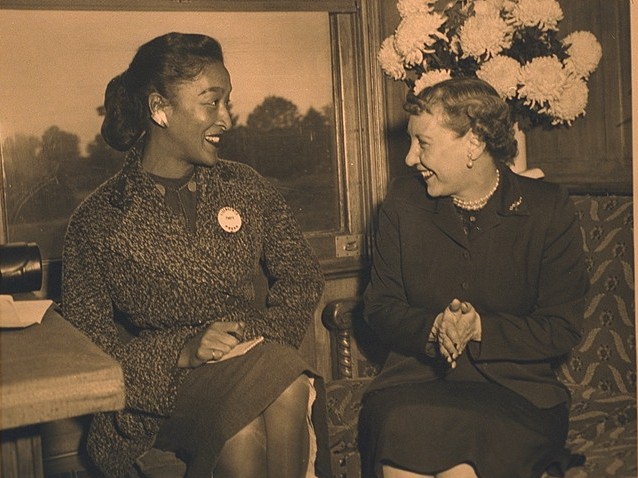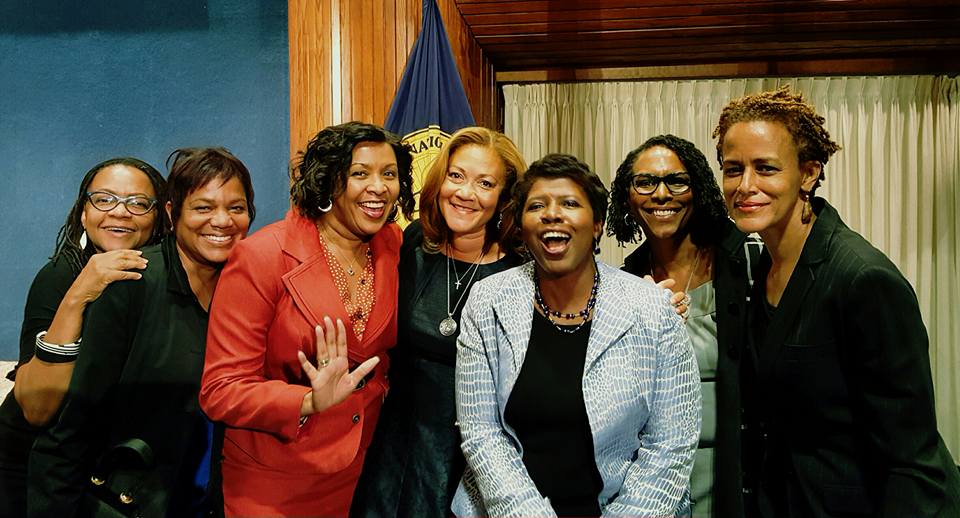by Yanick Rice Lamb | Aug 1, 2018 | APT |
PDFs and links of the following documents are available below by clicking on the title. APT Table of Contents Appointments, Promotion and Tenure (APT) Guidelines Howard University Faculty Handbook Cathy Hughes School of Communications Recommendation 306-2015 Appendix A for Department of Media, Journalism and Film Criteria for Promotion to Full Professor and National Distinction Application for Promotion The evaluation period covers the previous six years, dating back to 2012, as reflected in the list of publications included in the application. The publications are numbered and can be found throughout this portfolio. Curriculum Vitae Classroom and student evaluations are included with the appropriate courses in the Teaching section and cited in the Application for Promotion here and above....
by Yanick Rice Lamb | Jul 26, 2018 | APT |
The requirements for promotion from tenured associate professor to full professor are set forth in Recommendation 306-2015 and the departmental Guidelines for Creative Achievement in Appendix A. Taken together, these documents offer examples of scholarly and creative activities that have been deemed “exemplary” and “high” as determined by the faculty, peer institutions and best practices of the discipline. I have a solid record in teaching, research/creative work and service — all of which have consistently been measured as high, outstanding or exemplary in annual evaluations. This is reflected in the summary below and throughout this portfolio, also accessible by hyperlinks in this document. Please note that professional development is now evaluated as part of teaching, research/creative work and service. However, my professional development activities are also grouped in a separate section because of overlaps and to make it easier to find everything in one place. The journalism section on page 7 of Appendix A also notes the following: While length may be a consideration, it should not be the overriding consideration in evaluating a piece of work. What is more important is the quality of the work and its impact on public debate and to what degree it speaks for the voiceless in underserved communities. A series of short pieces that are timely can make as valuable a contribution as a book, which can take months or years before it reaches the public. On promotion from tenured associate professor to full professor, Recommendation 306-2015 states the following in Sections VII.D.1-3 (page 15) and X.B.1-5. (page 19): Section VII.D.1: Degree Requirements The candidate shall possess … a master’s degree and professional distinction at the national...

by Yanick Rice Lamb | Jun 23, 2018 | Uncategorized |
Under review by Journalism, Sage Publishing Abstract From 1943 to 1962, Evelyn Cunningham was a reporter and columnist for the Pittsburgh Courier, a leading black newspaper. She also spent five years as a radio host, interviewing newsmakers ranging from Malcolm X to Sammy Davis Jr. Known as the “lynching editor,” Cunningham was among the few women who covered the hot spots of the Civil Rights Movement. She chronicled an important chapter in U.S. history, not only as a correspondent for the black press but also as a stringer for New York dailies. However, little is known about Cunningham’s role as a journalist and witness to history. My ongoing research attempts to correct this through in-depth interviews with Cunningham, her peers, and observers, as well as a review of her work, papers, and articles about this pioneer. Literature Review Unlike black journalists Ida B. Wells, Mary Shadd Cary, Charlotta Bass, Alice Dunnigan, Evelyn Payne, Ted Poston, and John H. Johnson, no books and few articles have been devoted to Evelyn Cunningham’s career. She considered writing an autobiography, but even at the age of 94 she was still reluctant to betray confidential sources long dead and took many secrets to her grave. However, some of her papers have been archived at the Amistad Research Center at Tulane University in New Orleans, and her oral history is part of the National Visionary Leadership Project, established by Camille Cosby and Renee Poussaint. Cunningham was also featured on TheHistoryChannel.com, an online video for “Democracy Now!” and Soldiers Without Swords, a PBS documentary on the black press by Stanley Nelson. Some of her articles were digitized...

by Yanick Rice Lamb | Mar 29, 2018 | Articles, My Work |
I didn’t know that my family was “broken” until I heard it on the news. Although my parents divorced when I was five years old, my father was still in my life. So, too, were my attentive stepfather, a doting grandfather, wonderful uncles, cousins and neighbors. My siblings and I grew up in an all-important “village” filled with caring people who still care about us as adults, now with our own children and grandchildren. I’m also the first-born of an immigrant family from a “shithole” country, according to the president of the United States. In addition to what the president dreams up on his own, his views and other stereotypes held by too many people often stem from media portrayals that are distorted or nonexistent. Fifty years ago, the Kerner Commission blamed such media portrayals, or lack thereof, for contributing to nationwide uprisings in the summer of 1967 by African Americans who were sick and tired of being sick and tired, to paraphrase Fannie Lou Hamer. The National Advisory Commission on Civil Disorders, as it was officially called, appointed by President Lyndon Johnson to investigate the underlying causes of the unrest, made some sobering findings, concluding, “Our nation is moving toward two societies, one black, one white — separate and unequal.” It also found that the media presented a fragmented picture to the public that failed to show the everyday lives of black and brown people and that underplayed disparities in areas such as education, housing, employment, income, health, and policing. To mark the 50th anniversary of the report, commemorative conferences, studies, and other research have assessed progress, or lack thereof,...

by Yanick Rice Lamb | Dec 4, 2016 | Articles, My Work |
Gwen Ifill made it easier for Sonya Ross to cover the White House. She set a great example, provided pointers, and boosted her confidence. “She blazed a trail,” said Ross, a White House reporter at the Associated Press for nearly seven years who is now AP’s race and ethnicity editor. “She didn’t just teach me how to do it; she showed the world how to do it.” Indeed, people around the world were stunned by reports of the 61-year-old Ifill’s death from cancer in mid-November—two days before she was to receive the 2016 John Chancellor Award for Excellence in Journalism at Columbia University. Everyone from President Obama to people on the street praised the way in which she protected “the public’s right to know” throughout her career, most recently as moderator and managing editor of Washington Week as well as co-anchor and managing editor of PBS NewsHour. However, her loss is especially profound for African-American journalists, especially women. The pool of black journalists covering national politics is small, and it’s even tinier for coveted beats like the White House and presidential campaigns, of which Ifill covered seven. “She showed that, number one, black journalists can do that,” said Vanessa Williams, a national reporter at the Washington Post who covered the recent election. “There are not a whole lot of us, but there are more because of Gwen.” Click here to read more...




Recent Comments